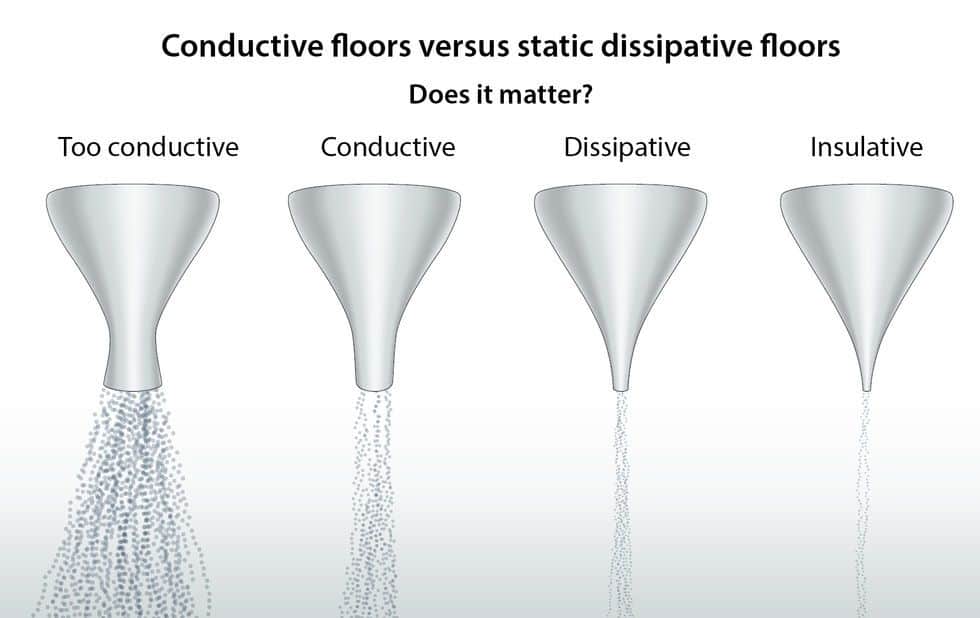Glossary: Conductive
The term “conductive” refers to the ability of a material to conduct a charge to ground. Any floor with an electrical resistance measuring < 1.0 x 10E9 is capable of conducting static charges away from people and objects to ground.
When differentiating between “conductive” and “static-dissipative” flooring materials, materials with an electrical resistance < 1.0 x 10E6 (1 million ohms) are usually considered conductive. Flooring materials measuring between 1.0 x 10E6 and 1.0 x 10E9 are considered static dissipative.
While ANSI/ESD standards do not specify a minimum electrical resistance, for best practices the industry has historically set a minimum of 2.5 x 10E4.
Electrical resistance below 2.5 x 10E4 is considered a potential shock hazard. Floors reading below 1 x 10E6 are prohibited for use around energized equipment by telecom and Federal Aviation Administration standards: Motorola R56 and FAA 019f.


Learning Center Articles
- ESD Basics
- Installation & Maintenance
- Selecting & Specifying an ESD Floor
- Technical Information
- 7 Common Mistakes Selecting an ESD floor
- A Guide to ESD Flooring Selection
- Avoid Costly Failures: What You Need to Know When Specifying ESD Flooring
- Choosing ESD Flooring for:
- ESD Footwear: What Is It and When Is It Necessary?
- ESD Footwear for Electronics Manufacturing and Handling Applications
- Facility Managers’ Guide to Selecting ESD Flooring
- The Need for Due Diligence in Specifying Static-Free Flooring
- Standard of Care for Specifying Floors in Mission-Critical Spaces
- Understanding the Hidden Costs of ESD Flooring

StaticWorx high-performance static-control floors protect electronic components, explosives, and high-speed computers from damage caused by static electricity. ESD flooring is part of a system. Choices should always be based on objective, researched evidence. When you partner with us, we look at all possible items that may need to integrate with the floor, and, focusing on your goals and objectives, help you find the right floor for your application.








